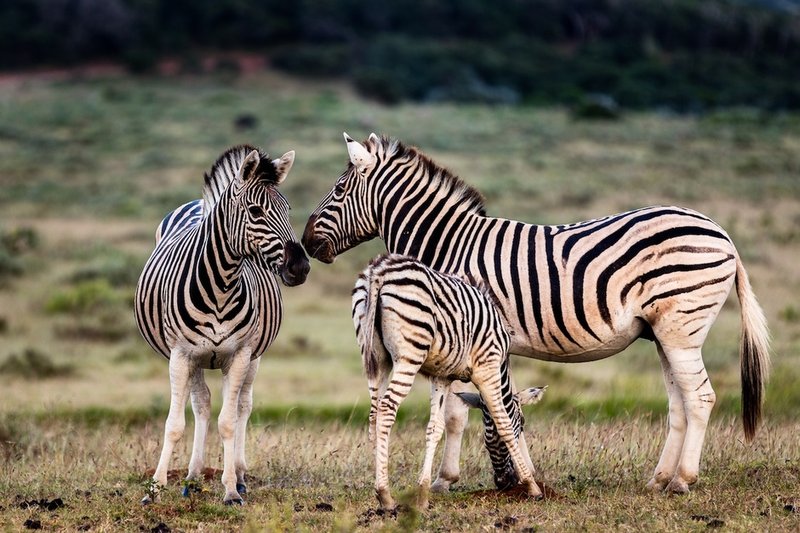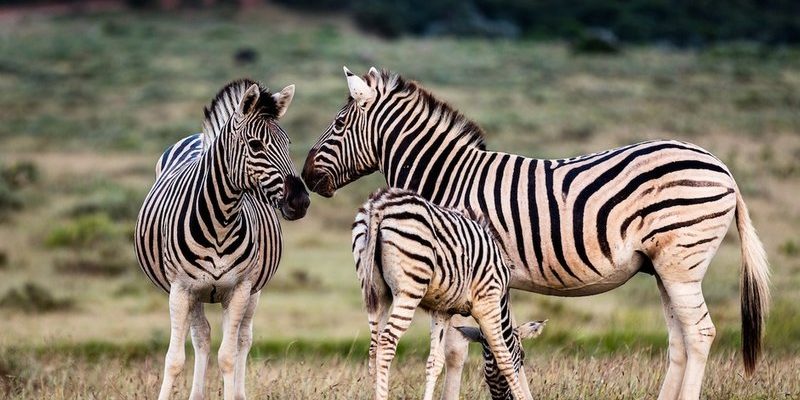
These zebras are more than just pretty patterns. They live in the vast grasslands and savannas of Africa, creating a stunning contrast against the landscape. In this article, we’ll unpack ten captivating facts about the plains zebra that may surprise you and pique your curiosity. It’s like peeling back the layers of a delicious onion; the more you learn, the more intriguing it gets!
1. The Unique Stripes
You might think all zebras look alike, but that’s far from the truth. Each plains zebra has its own unique pattern of stripes, much like human fingerprints. This isn’t just for show; their stripes serve several practical purposes. For starters, they help with camouflage. When zebras gather in large groups, their stripes create a confusing visual for predators, making it hard to pick out a single animal.
But that’s not all! Research shows that these stripes may also help regulate their body temperature. You could think of the stripes as nature’s way of providing air conditioning. The contrasting colors can create variations in heat, which can affect how much heat a zebra absorbs from the sun. Isn’t that cool?
2. Social Behavior
Plains zebras are known for their strong social bonds. They live in groups called harems, which usually consist of one male and several females. Picture a tight-knit community having each other’s backs; that’s how zebras roll. The males are often seen fighting over territory and mating rights, which adds a bit of drama to their social structure.
Interestingly, zebras also exhibit behaviors that show deep family ties. Mother zebras are incredibly protective of their foals. They’ll even go as far as to recognize their young by their distinct calls and scents. You might say zebras have a built-in GPS when it comes to their families!
3. Their Diet and Grazing Habits
Plains zebras are grazers and mainly feed on grasses. Think of them as lawnmowers of the savanna — they keep the grasslands healthy by grazing on the grass and encouraging new growth. Their teeth are well-suited for this task; they have flat molars that can grind down tough grass, making them highly efficient eaters.
Another fascinating aspect of their diet is that they can survive on less water than you’d think. During drier months, plains zebras can sustain themselves by getting most of their hydration from the grass they eat. This makes them incredibly adaptable, allowing them to thrive in varying landscapes across Africa.
4. Communication Skills
Zebras are quite the talkers! They use a range of sounds to communicate with one another. From high-pitched whinnies to low grunts, each sound conveys something different. For instance, a loud bark is usually a warning signal to alert others of a nearby predator.
In addition to vocal sounds, zebras also rely on body language. You might notice them flattening their ears or bobbing their heads; these gestures can indicate excitement, aggression, or even submission. It’s kind of like watching a live performance where every movement tells a story.
5. Migration Patterns
Did you know that plains zebras are also known for their long migrations? These animals often travel great distances in search of food and water. Their migrations can cover hundreds of miles as they follow the seasonal rains across the grasslands.
These journeys aren’t just physically demanding; they also require a good understanding of the landscape. Zebras often travel alongside wildebeests, forming a cooperative relationship, which helps them avoid predators. Just imagine a flock of birds working together to stay safe; it’s nature’s version of teamwork!
6. Lifespan and Reproduction
In the wild, plains zebras typically live for about 20 years, but some can reach 30, especially in protected environments, like national parks. Their breeding season can be quite competitive, with males displaying their strength through fights and displays to attract females.
Once a female zebra gives birth, she usually keeps the foal hidden for a few days to protect it from predators. After that, she introduces it to the herd, where it learns vital survival skills from other adult zebras and even from siblings. It’s pretty heartwarming to see how community plays a role in raising the young!
7. Adaptations for Survival
Life in the wild is no cakewalk, and plains zebras have some remarkable adaptations to help them survive. Their keen eyesight allows them to spot predators from far away. This is vital in the open savanna where there’s little cover.
Additionally, zebras are faster than you might expect. They can run up to 40 miles per hour to escape from danger. Imagine sprinting while keeping a keen eye on your surroundings — that’s what zebras do every day! Their strong legs not only provide speed but also endurance, allowing them to outrun predators over long distances.
8. Conservation Status
Plains zebras are currently classified as a species of “Least Concern” due to their large populations. However, that doesn’t mean they’re out of the woods. Habitat loss and poaching remain significant threats. Conservation efforts are crucial to ensuring their habitats are protected and that these amazing creatures continue to thrive in the wild.
Many national parks across Africa are working tirelessly to safeguard the plains zebra population. You might not think of it, but even something as simple as eco-tourism can contribute to their conservation. When people visit and support wildlife parks, it helps fund ongoing protection efforts.
9. Cultural Significance
Zebras hold a special place in various cultures across Africa. They are often seen as symbols of beauty, strength, and freedom. Their striking appearance and unique social behaviors have inspired countless stories, artworks, and even folklore.
For local communities, zebras can also be indicators of ecological health. Their presence often suggests that the grasslands are in good condition, making them vital to the ecosystem. It’s fascinating how these animals play an essential role beyond just being beautiful creatures of the wild.
10. Fun Facts to Wrap It Up
To wrap things up, let’s throw in some fun tidbits about plains zebras:
- Unique Names: A group of zebras is called a “dazzle,” which perfectly captures their striking appearance.
- Black or White? There’s a debate about whether zebras are black with white stripes or the other way around. Science suggests they are black-skinned with white fur!
- Social Learners: Young zebras often learn important survival skills by watching and mimicking older members of their groups.
So, the next time you spot a plains zebra in a wildlife documentary or a zoo, you’ll have a treasure trove of fascinating facts to share!
In summary, plains zebras are not just another pretty face; they’re complex creatures with rich lives filled with social interaction, survival skills, and stunning adaptations. Their stripes are more than just fashion statements; they’re essential tools for life in the wild. So, let’s continue to learn about and protect these incredible animals for generations to come!

